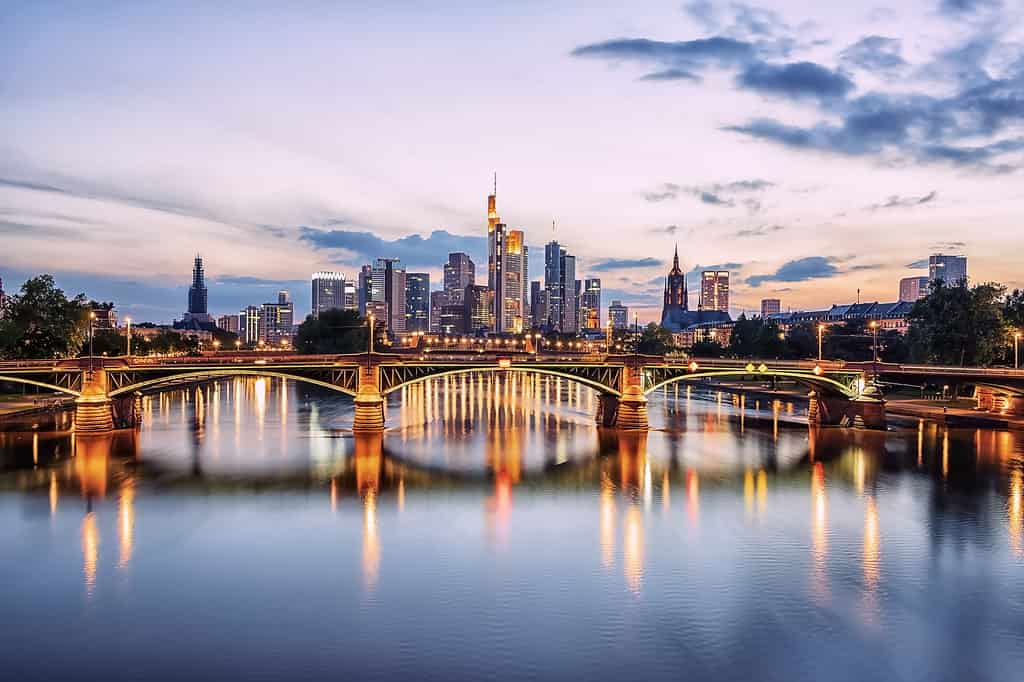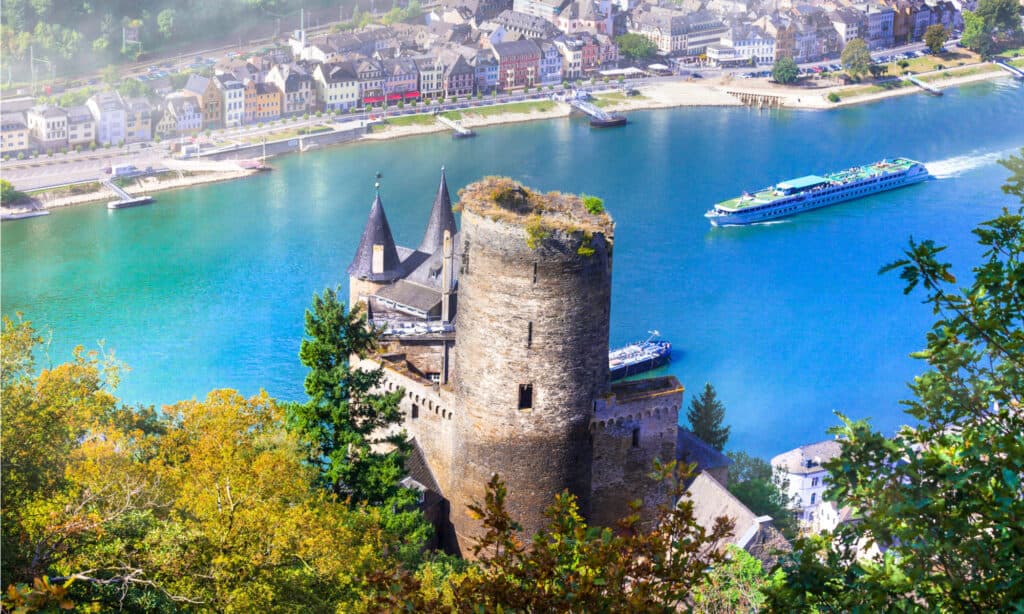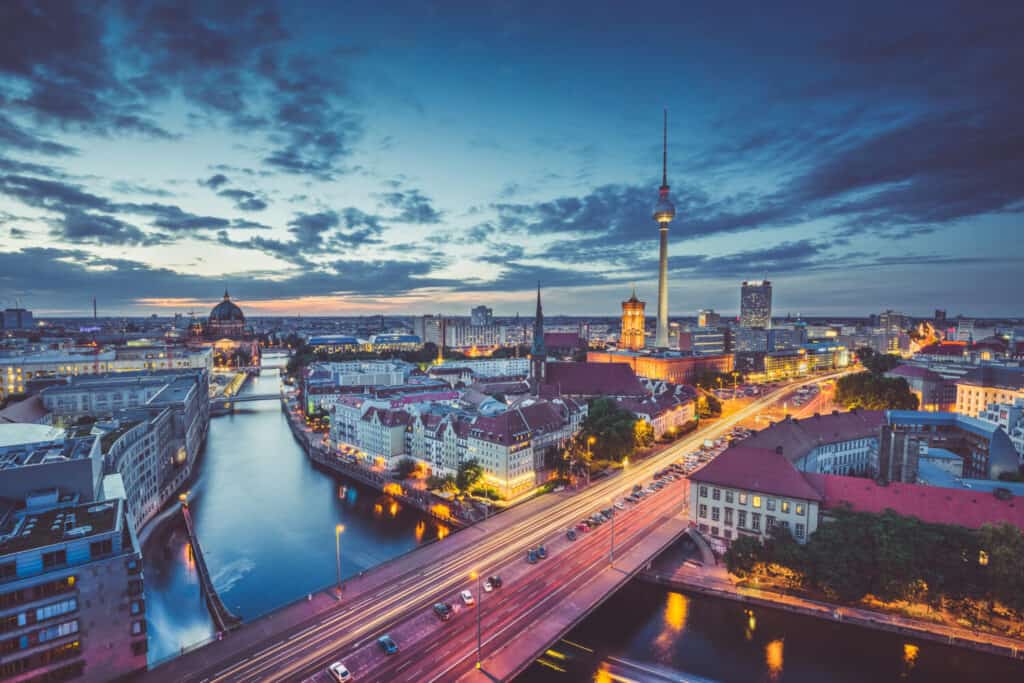Germany, the world’s fourth-largest economy, is a robust country in Central Europe. Its diverse landscapes and cultural vibrancy make it a wonderful place to live in and visit. Extending from the Alpine peaks in the south to the Baltic Sea’s shores in the north, Germany’s rich geography encompasses the second-most populous country in Europe and the seventh largest by area. Here, dive into the expansive size of Germany, contrasting it with other European nations and explore the wonders that lie within its borders.
Germany’s Size in Different Units
Miles
Germany spans 137,988 square miles, making it larger than the United Kingdom (93,628 sq mi) but smaller than its neighbor, France (213,011 sq mi). A drive across Germany reveals a unique blend of architecture, from traditional timbered houses to ultra-modern skyscrapers.
Kilometers
In the metric system, Germany measures 357,386 square kilometers (137,983 sq mi), making it more extensive than Italy (301,318 sq km or 116,346 sq mi) and yet not as vast as Spain (498,511 sq km or 192,476 sq mi). The kilometers seem to melt away as one explores the countryside dotted with ancient castles and lush vineyards. Germany’s landscape traverses from the outer ranges of the Alps northward across the Central German Uplands and then across the North German Plain.
Acres
Covering approximately 88,515,000 acres, Germany’s size allows for a diverse range of landscapes and ecosystems. It’s more prominent than Poland but smaller than Ukraine. These acres are alive with history, nature, and innovations that resonate with Germany’s deep roots and forward-thinking attitude. (And not with the sound of music if that’s something you were thinking. That’s in Salzburg, Austria.)

Frankfurt holds the largest trade fair for books in the world.
©iStock.com/StockByM
Comparative Analysis of Germany and Its Neighbors
Germany ranks 7th in Europe by area, trailing countries like Russia, Ukraine, and France. A glance at a map or chart reveals the complexity of its borders and variety of its landscapes. In fact, it almost resembles a common jigsaw puzzle piece. Within its borders lay a rich mesh of culture, politics, and technological prowess.
Germany in Historical Perspective
Germany’s long and turbulent history, defined by political decisions and natural disasters, especially historical earthquakes, has resulted in its current size. From the period of the ancient tribes through the Holy Roman Empire, the region has served as both a battlefield and a muse, influencing its current identity. The formal unification of Germany into the modern nation-state began on August 18, 1866, and resulted in the establishment of the German Empire in 1871. The history of the country includes periods of immense upheaval, such as the Nazi era and the post-war split of the country into West and East Germany. It wasn’t until October 3, 1990, that the two halves were finally reunified.

Katz Castle is one of over 20,000 castles in Germany.
©leoks/Shutterstock.com
Germany’s Landmarks and Destinations
Major Landmarks
Zugspitze’s towering peaks, the winding Rhine River, and the serene Lake Constance are just the tip of the iceberg in Germany’s natural wonders. Along the Rhine and its tributaries, you’ll find hundreds of medieval castles, picturesque villages, and centers of learning and culture.
Popular Destinations
Cities like Berlin, Munich, and Frankfurt are hubs of art, industry, and nightlife. Complementing the major cities, regions like the Black Forest and the captivating Neuschwanstein Castle speak of fairytales and traditions. And if beer could be a destination, it would definitely rank as one of the most popular.
Things to Do
Take in the cultural experiences of wonderful Berlin. Hike through the Alps and discover exactly what alpenglow is and why it’s so special. Not a hiker? Savor culinary delights in various regions, where you can find beer and sausages around almost every turn. An animal lover? The Berlin Zoo has a crazy extensive collection of critters big and small. Book lover? No backorders needed in Stuttgart, the most book-loving city in Europe. The Germans consider their country “Das Land der Dichter und Denker,” the land of poets and thinkers, for a reason.

Berlin tops cities like Venice and Amsterdam for having the most canals, not only in Europe, but in the entire world.
©canadastock/Shutterstock.com
Global Rankings
In the grand scheme of things, Germany ranks 63rd globally in terms of size. This modest global ranking does not diminish its stature as a major European power, rich in history, innovation, and influence in various international organizations, including the European Union. It also ranks fourth overall in the world economy, behind the United States, China, and Japan.
Implications of Germany’s Size
Germany’s size affects its economy, environment, culture, and much more. From its strong economy to its position in the European Parliament, Council of the EU, and European Commission, Germany’s physical size is only a fragment of its global presence. Its geographical diversity, ranging from flat northern plains to the towering Alps, offers something for nature lovers, historians, and romantics alike.
Germany’s Cultural Heritage and Unique Traditions
Germany is a culturally diverse country with a rich history, known for its castles, diverse dialects, and love for beer and sausages. It’s a leader in various fields, including being the EU’s largest economy, having a strong automotive industry, and being at the forefront of climate and energy policies. Unique traditions and customs, such as the Christmas tree tradition, the concept of Schultüte (“school cone”) for school children, and the right to deny baby names under German law, add to its charm.

First day of first grade in Germany? Then better not forget your Schultüte!
©Savicic/Shutterstock.com
Germany Fun and Interesting Facts
Germany is a fascinating country with a rich history and culture. Here are some fun and interesting facts about Germany that you likely don’t already know:
1. More than 1,000 types of sausages feed German taste buds.
2. When it comes to last names, Müller is the Smith of Germany.
3. In Bavaria, beer is considered a food. They “eat” around 150 liters per year, or around 317 pints.
4. With hundreds of types of breads and more than a thousand kinds of baked goodies, Germans clearly love their raised dough.
5. Gummy bears were invented in Germany by Hans Riegel.
6. The first Oktoberfest was actually a wedding celebration.
7. The myth that JFK called himself a “jelly donut” in Berlin is not true.
8. Germany is home to the world’s largest cathedral, the Cologne Cathedral.
9. In Germany, attempting to escape jail is legal, although authorities will punish any additional crimes committed during the escape.
10. Germany has over 20,000 castles to explore.
11. Thousands of unexploded bombs from World War II are still found in Germany each year.
12. Manners can be confusing in Germany. Saying Danke (“thank you”) can also mean “no thank you.”
13. Germany was the first country to adopt Daylight Savings Time in 1916.
14. Germany is known for its celebrations, including Oktoberfest and the Christmas tree tradition.
15. Germany has over 400 zoos, including the Berlin Zoo with the largest collection of animals.
16. Not Venice, but Berlin is home to the most canals in the world.
17. Despite being known for their punctiliousness, Germans still avoid toasting with water, reflecting some superstitious beliefs.
18. Former Prime Minister Angela Merkel has her own Barbie doll.
19. There are no speed limits along certain sections of the Autobahn.
20. One-third of Germany is covered in forests.
Conclusion
Germany’s size, defined in miles, kilometers, and acres, paints a picture of a nation robust and rich in every sense. Germany is a land where history meets innovation, nature embraces architecture, and every season can be enjoyed to the fullest. The nation’s unique geographical features shape its identity, inviting us to explore, learn, and be enchanted by this remarkable land. Whether it’s the country’s beer, books, forests, castles, zoos, historical sites, or technological advancements that draw you to it Germany, it’s a big enough country for thinkers and doers of all stripes.
The photo featured at the top of this post is © Osman Bugra Nuvasil/Shutterstock.com
Thank you for reading! Have some feedback for us? Contact the AZ Animals editorial team.







